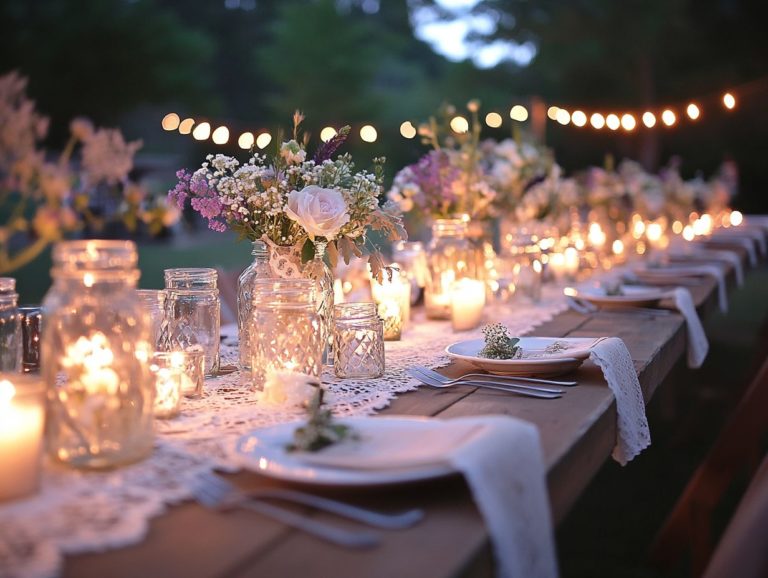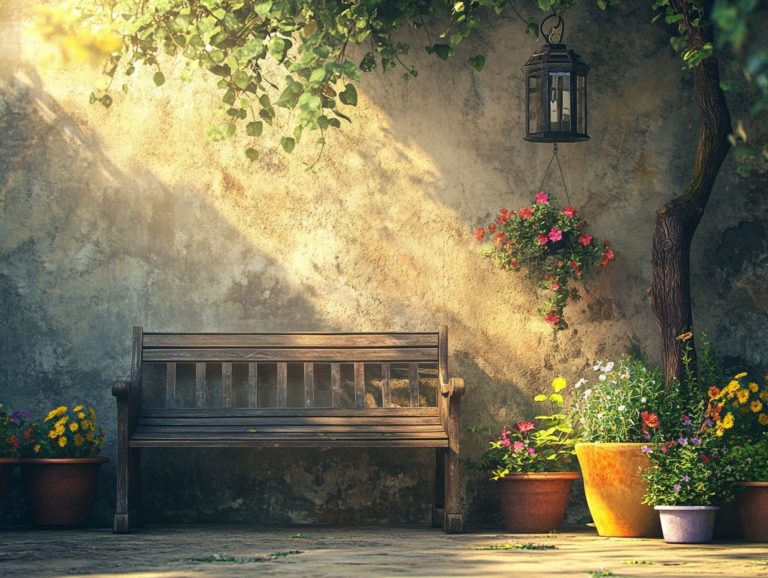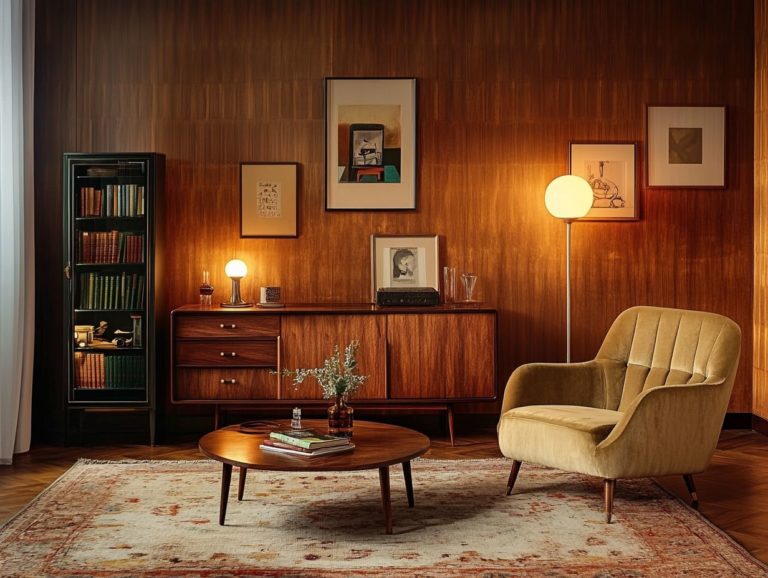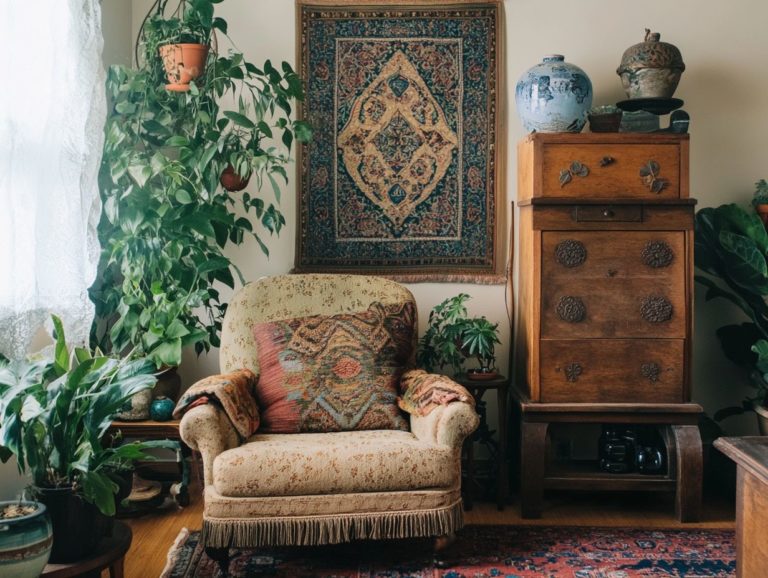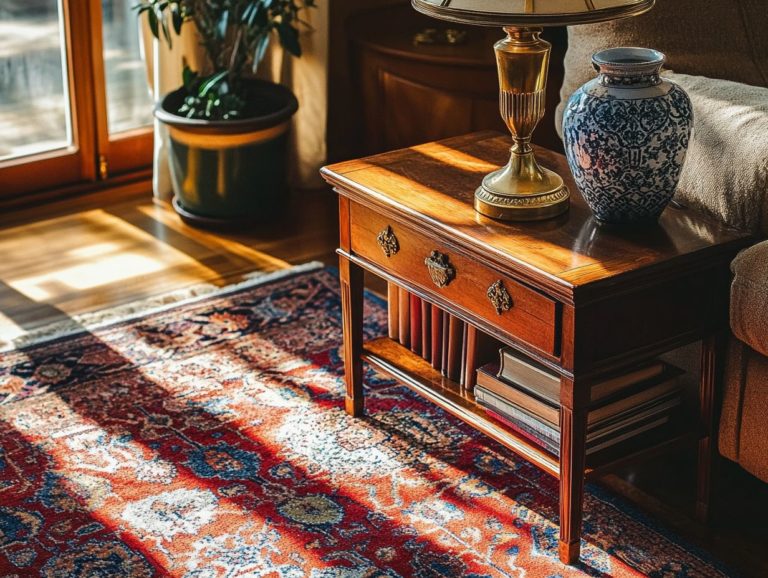What Are the Benefits of Vintage Collectibles?
Vintage collectibles possess a distinctive charm that captivates both enthusiasts and casual collectors. They often reflect diverse motives behind acquiring unique assets.
From defining what truly qualifies as vintage to delving into the rich nostalgia and aesthetic appeal these items offer, this guide will navigate you through the many aspects of vintage collectibles, including fine art, classic cars, and vintage jewelry.
Whether you re contemplating an investment for potential financial gain or simply eager to embark on your collection journey, get ready for practical tips and insights that will enhance your collection experience!
Prepare to uncover the allure and benefits of these vintage treasures, which evoke emotional significance and personal satisfaction!
Contents
Key Takeaways:
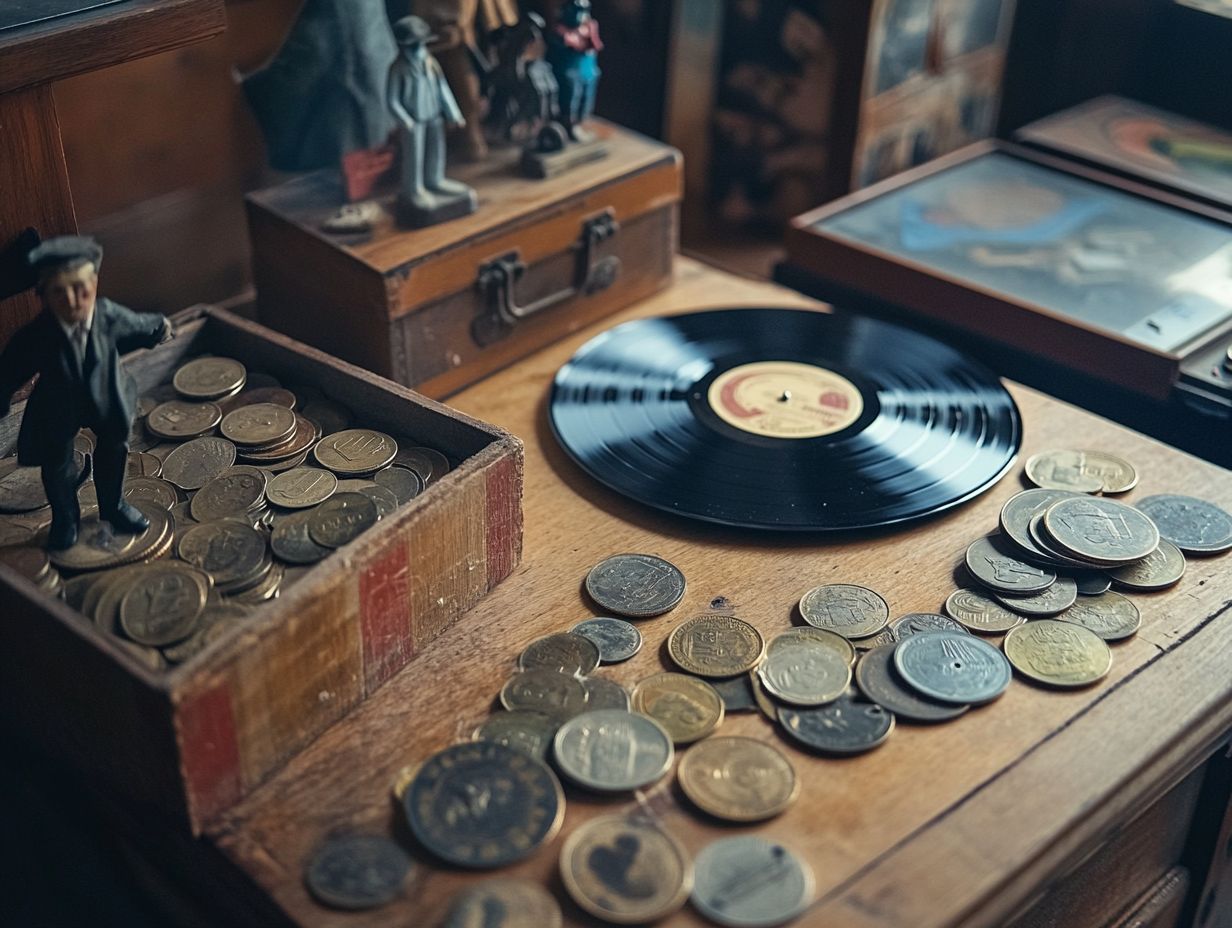
- Vintage collectibles hold sentimental value and can evoke feelings of nostalgia, making them appealing to collectors.
- With their unique aesthetics and quality, vintage collectibles add a touch of character and charm to any space.
- Investing in vintage collectibles has the potential for financial gain. However, it’s important to carefully consider factors such as authenticity and investment risks before making a purchase.
Understanding Vintage Collectibles
Understanding vintage collectibles requires an appreciation for the rich diversity of items that not only hold personal significance but also offer potential investment opportunities.
The collectibles market has grown significantly, particularly in the wake of Covid-19. This growth has unveiled various categories like fine art, classic cars, and antique furniture that captivate collectors for myriad reasons.
These distinctive assets can spark nostalgia and provide emotional resonance. They also carry investment risks, market fluctuations, and liquidity challenges that you must navigate with care, especially in the collectibles market.
Defining What Qualifies as Vintage
Vintage items are typically viewed as treasures that are at least 20 years old. Each carries a distinctive charm born from their rarity and craftsmanship, showcasing a connection to historical events and personal passion.
Provenance, or the history of ownership, is key in establishing the value of a collectible. The more well-documented the history, including the chain of ownership, the greater the allure for collectors like you. These pieces are not merely relics of the past; they embody the artistry of their original creators, adding to their desirability.
The rarity of a specific item can dramatically uplift its market price. Limited editions or those tied to significant events, like the rise of collectible items during the Covid-19 pandemic, often become hot commodities.
In essence, the interplay of age, uniqueness, provenance, and craftsmanship serves as the foundation for valuation in the dynamic realm of vintage collectibles.
The Appeal of Vintage Collectibles
The allure of vintage collectibles captures your imagination, evoking nostalgia and holding sentimental significance. This transforms them into treasured possessions, appealing to the psychological aspects of collectors.
Whether it’s vintage toys, fine art, or sports memorabilia, these collectibles exude a unique charm that sets them apart from modern items. They foster a deep-seated desire for ownership steeped in emotional resonance. Additionally, understanding why collecting vintage accessories is worth it can enhance your appreciation for these timeless treasures.
Nostalgia and Sentimental Value
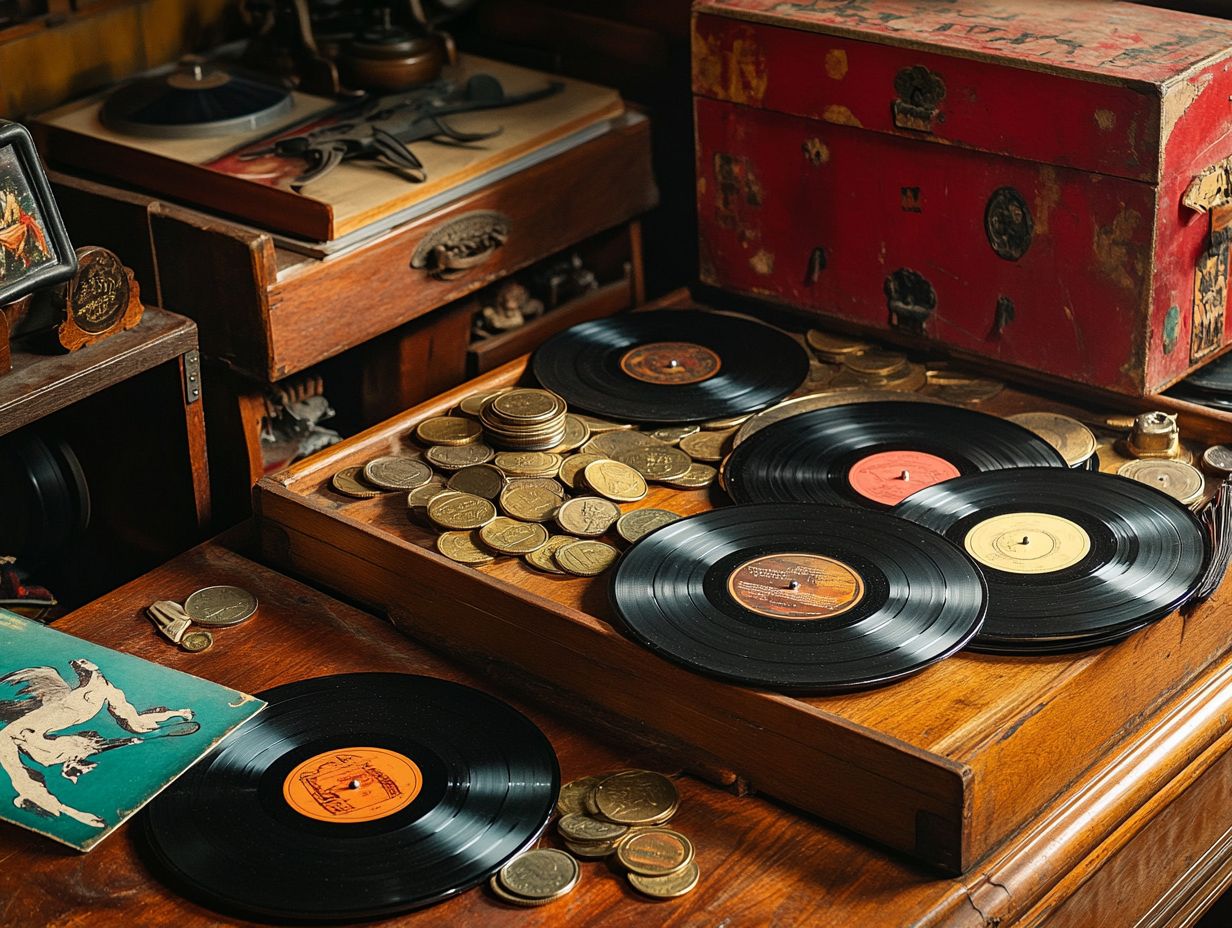
Nostalgia plays an important role in attracting you to vintage collectibles. These items evoke memories from your childhood or significant historical moments, including iconic memorabilia from the past.
Emotional ties often serve as compelling motivators, encouraging you to seek out beloved toys, classic memorabilia, or vintage clothing that reflect treasured experiences and resonate with your collecting hobbies.
As you explore various markets, the sentiment attached to these items can greatly influence your purchasing decisions. This often leads you to acquire pieces that bring about strong feelings of joy and satisfaction.
The intrinsic value of these collectibles goes beyond mere aesthetics; they encapsulate personal stories and shared histories that resonate deeply with your own journey within collector networks.
Ultimately, the joy you derive from this hobby creates a fulfilling experience, allowing you to forge lasting connections with both your past and fellow collectors who share your passions.
Unique Aesthetics and Quality
The unique aesthetics and craftsmanship of vintage collectibles set them apart from modern counterparts. They capture the attention of collectors who truly value quality and artistry in luxury items.
Consider the intricate brush strokes of a classic painting or the gleaming chrome details of a vintage automobile. Each piece tells a story rich in history, much like collectible categories such as fine wine or vintage jewelry.
These treasures often showcase materials and techniques that have vanished from contemporary production, making them not just visually enchanting but also a testament to the remarkable skill of their creators.
As a collector, you ll recognize that investing in these items frequently leads to long-term value. Their rarity and quality can significantly boost market appeal, especially in the face of price volatility.
Collectors everywhere are excited about the growing value of unique artistry, fine craftsmanship, and the potential for high returns, further solidifying the cherished place of vintage collectibles in the hearts of enthusiasts.
Investing in Vintage Collectibles
Investing in vintage collectibles has become an intriguing avenue for you to diversify your portfolio and explore speculative investments that can yield significant rewards.
Many collectors see these unique assets not just as cherished items, but as potential financial gains. The collectibles market is booming in areas like fine art and classic cars.
The collectibles market is experiencing a surge in interest, especially in areas like fine wine, classic cars, and rare comic books. These categories attract discerning investors like yourself who are keen to navigate the complexities of investment risks and price fluctuations, particularly during the Covid-19 pandemic.
Potential for Financial Gain
The potential for financial gain in the collectibles market is substantial. Items like fine art, classic cars, and high-end watches often yield impressive returns when demand is high.
To truly capitalize on these opportunities, consider diversifying your portfolio across various categories such as vintage watches, rare coins, or pop culture memorabilia, including trading cards and sports memorabilia.
Understanding market trends is crucial; price volatility can impact your short-term investments, especially in the collectibles market. For example, vintage sports cards and trading cards from major events have recently surged in value, driven by a wave of nostalgia and heightened auction activity at renowned auction houses.
By staying informed about emerging collectible categories and analyzing historical data, you can equip yourself with the insights needed to make well-informed decisions.
This approach maximizes your potential for lucrative returns while minimizing financial risks, including maintenance expenses and tax obligations.
Don t miss out on the chance to invest in collectibles that could increase in value!
Factors to Consider Before Investing
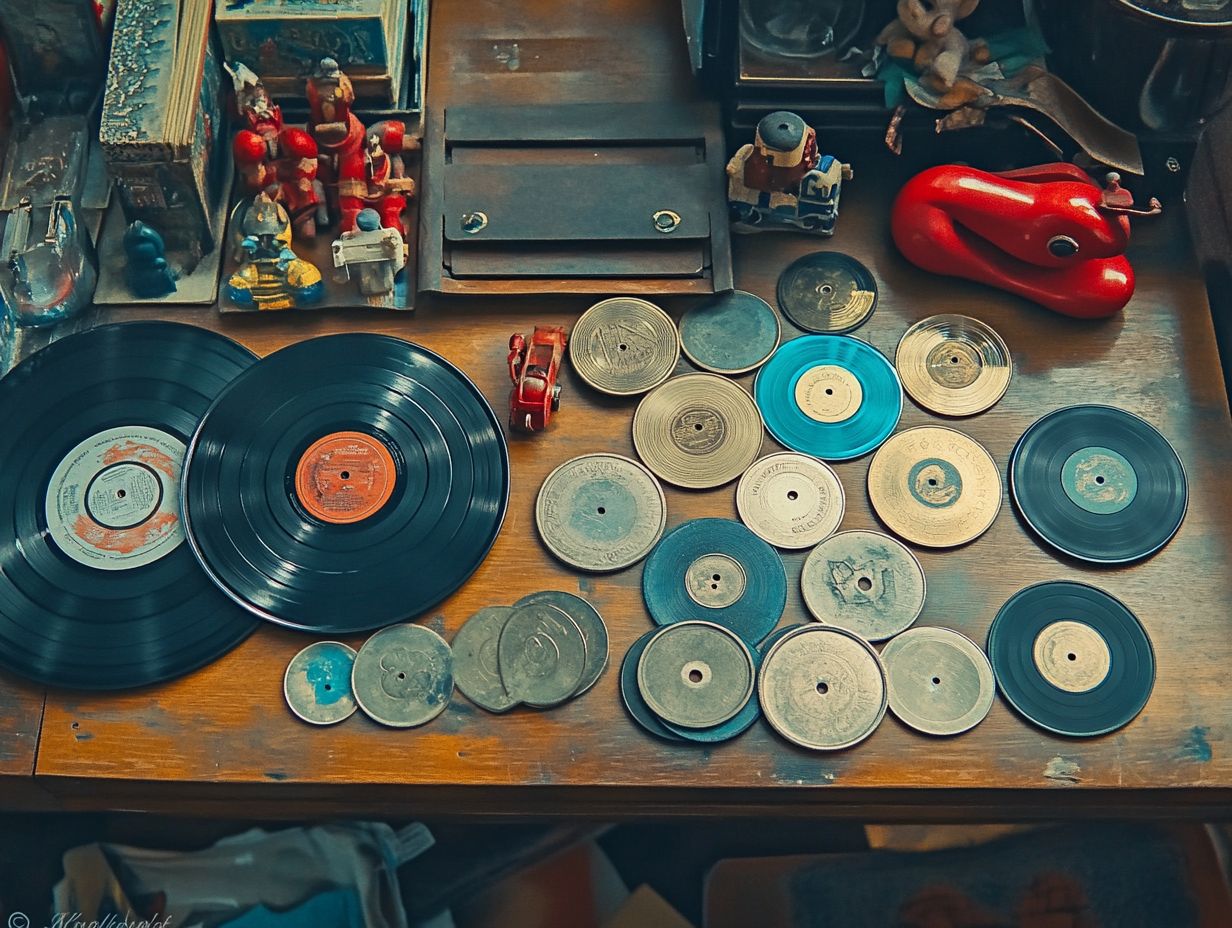
Before diving into the world of vintage collectibles, it s essential to weigh several factors, including investment risks, maintenance costs, and potential tax implications tied to ownership.
Understanding market demand is critical. Some items, such as fine art and vintage toys, can see their value fluctuate wildly based on trends and buyer interest. By preserving a collectible’s condition through proper storage and care, you can stave off depreciation, turning a passion project into a profitable investment that aligns with your love for collecting. To learn more about the appeal of vintage items, check out what makes vintage decor unique.
It s wise to familiarize yourself with how to verify if an item is real and the item s history, including its chain of ownership. These elements significantly influence the legitimacy and future value of your items. By considering these factors and engaging with collector networks, you ll be better equipped to make informed investment decisions.
How to Start Collecting Vintage
Dive into the world of vintage collectibles with thoughtful planning and a discerning eye for quality, especially with the rise of online marketplaces. Immerse yourself in tips for discovering and evaluating items that resonate with your interests and aspirations, including understanding the historical context of collectible items.
Doing so will not only enhance your collection but also cultivate a deeper appreciation for the treasures that capture your passion.
Tips for Finding and Evaluating Items
Finding and evaluating vintage items requires a keen eye and commitment to thorough research. Ensure you have a solid grasp of authentication methods to verify the item’s history and quality through expert documentation.
As a collector, employ practical strategies to uncover hidden treasures. Attend specialized events, visit reputable auction houses, explore estate sales, and browse flea markets to unearth potential finds in various collectible categories. Immerse yourself in the market’s nuances and learn to assess an item s authenticity through expert documentation and certification processes.
Evaluating overall condition considering original packaging, maintenance history, and signs of wear provides clarity on an item s true value and helps mitigate depreciation. Building relationships with knowledgeable dealers and attending specialized events can transform your collecting journey into a more rewarding experience, potentially leading to high-value acquisitions.
Building and Maintaining a Collection
Building and maintaining a vintage collectibles collection demands ongoing dedication, strategic planning, and keen awareness of market demand to secure optimal long-term returns on luxury items.
These foundational elements are crucial for actively networking with fellow enthusiasts through social and collector networks. Such connections can unveil valuable insights, lead to rare finds, and create trading opportunities.
Prioritize managing appropriate insurance policies for high-value items, including vintage jewelry and fine art. This protection is essential against unforeseen losses or damage due to market fluctuations.
As market trends fluctuate, your ability to adapt by regularly assessing the value of your collection will position you favorably for sales or trades. Sustained commitment and proactive measures are vital for achieving success while finding genuine enjoyment in the vibrant world of vintage collecting.
Frequently Asked Questions
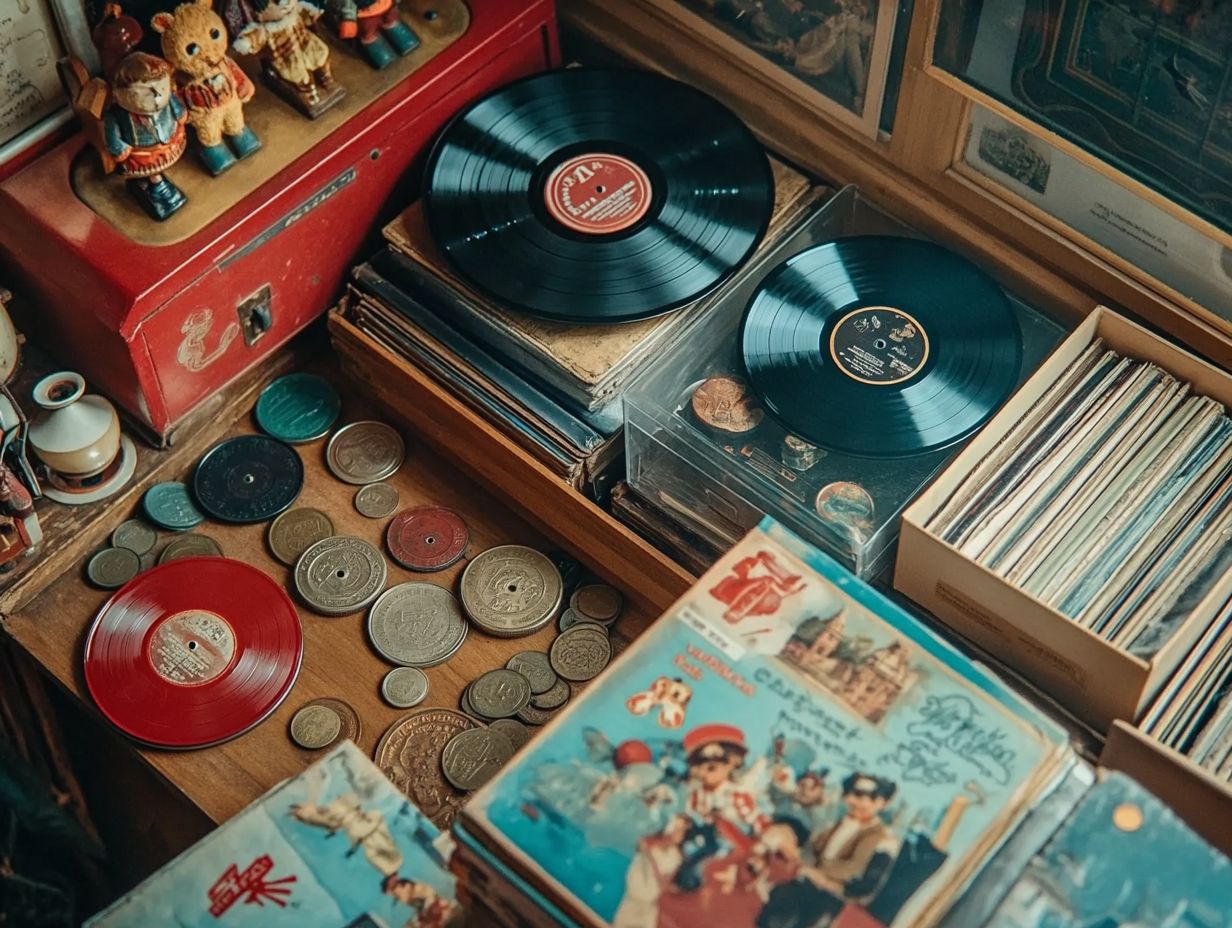
Ready to start your collection? Dive into the fascinating world of vintage collectibles today and discover treasures that resonate with you!
What are the benefits of vintage collectibles?
Collecting vintage items comes with numerous benefits:
- Historical significance: Vintage collectibles often have intriguing stories, providing a glimpse into the past.
- Uniqueness: Vintage items are rare and often one-of-a-kind, making them special additions to any collection.
- Value potential: Some vintage items can increase in value over time, making them smart investments.
- Nostalgia: Collecting vintage items can evoke cherished memories and hold sentimental value.
- Eco-friendly: By preserving vintage items, you help reduce waste and promote sustainability.
- Community connections: Vintage collectors often form strong communities, allowing for shared passions and connections.
What types of vintage collectibles are popular?
Many vintage items are highly sought after among collectors, such as:
- Antiques: Items over 100 years old, including furniture, jewelry, and art.
- Memorabilia: Pop culture items like movie posters, concert tickets, and sports collectibles.
- Toys and games: Vintage toys from various eras, including Barbie dolls and board games.
- Literature: Rare books and vintage magazines or comic books.
- Kitchenware: Vintage kitchen items like Pyrex bowls and teapots.
- Decorative items: Vintage home decor such as lamps, vases, and mirrors.
Are there any risks to collecting vintage items?
Collecting vintage items does involve some risks, including:
- Fakes and reproductions: Always research and purchase from reputable sellers to avoid fakes.
- Wear and tear: Vintage items may show age, impacting their value and appearance.
- Storage needs: Proper storage is crucial to prevent damage and deterioration.
- Price changes: The value of vintage items can fluctuate, so staying informed on market trends is essential.
- Emotional attachment: Collecting can be addictive; it’s important to set spending limits.
How do I start collecting vintage items?
If you want to dive into vintage collecting, consider these tips:
- Focus on a specific category or theme, such as antique furniture or vintage toys.
- Research market values and the authenticity of items that interest you.
- Find unique pieces at auctions, estate sales, or flea markets.
- Connect with fellow collectors and join online communities for guidance and potential items.
- Establish a budget and adhere to it to avoid overspending.
- Care for your collection to maintain its value and appearance.
Can vintage collectibles be used as home decor?
Absolutely! Vintage items enhance your home s character and spark conversations. Consider adding antique artwork or retro kitchenware to make your space truly unique.
Can vintage collectibles be speculative investments?
Yes, some vintage items can appreciate in value, making them worthwhile investments. Always research and buy from trustworthy sellers to ensure authenticity. Keep an eye on market trends to make informed decisions while buying or selling. Remember, the value of a collection can also stem from personal enjoyment and sentimental value, not just financial gain. Don t miss the chance to find treasures that could grow in value!

